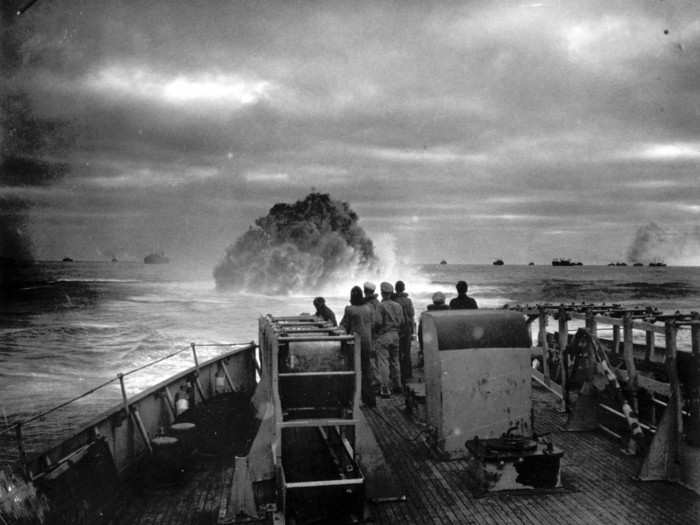
Magnus Nordenman: During each great conflict in Europe during the 20th century the Atlantic has served as the crucial bridge that allowed the flow of war-winning supplies and reinforcements from America to Europe.
If a conflict between Russia and NATO erupted in the coming years, the Atlantic would serve that role again.
But it would not be a re-run of previous battles for the Atlantic. Changes in technology, a new-style Russian navy, and the context of global great-power competition would all help shape a future battle for the Atlantic.

Nordenman: Unlike during Cold War days, the Russian navy is going for quality rather than quantity. And given that it has relatively limited resources it must focus its investments where they can make the biggest difference, and that is with its submarine force.
Russia has also focused on giving its navy a long-range strike capability with Kalibr missiles, which have been used to great effect in Syria. The use of long-range strike missiles from submarines was nearly an exclusive US domain until relatively recently.
All this suggests that Russia would not try to halt shipping coming across the Atlantic from the US but would instead seek to attack command-and-control centers and ports and airfields in Northern Europe to disrupt US efforts to come to the aid of its European allies.

Nordenman: Arctic security is a growing theme, but I think it often confuses the debate rather than enlightens it.
The North American, European, and Russian Arctics are three very different places in terms of politics, accessibility, operating environment, and international relations. To place it all under the rubric "Arctic security" is not always helpful.
In the case of NATO and its mission to provide deterrence on behalf of its member states it comes down to the Kola Peninsula, where Russia's northern fleet is based.
Listen to the full podcast here.

Nordenman: NATO member navies need to get familiar again with operating in the broader North Atlantic.
The last two decades have seen those navies primarily operate in places such as the Mediterranean, the [Persian] Gulf, and Indian Ocean. Those are very different domains in comparison to the Atlantic. And while the far North Atlantic is warming, it is not a hospitable place. It still remains very remote.
In terms of climate change, there are, for example, indications that warmer waters are changing the patterns of sound propagation in the far North Atlantic, which means that they must be measured and catalogued anew in order to conduct effective anti-submarine warfare.
 Colon cancer rates are rising in young people. If you have two symptoms you should get a colonoscopy, a GI oncologist says.
Colon cancer rates are rising in young people. If you have two symptoms you should get a colonoscopy, a GI oncologist says. I spent $2,000 for 7 nights in a 179-square-foot room on one of the world's largest cruise ships. Take a look inside my cabin.
I spent $2,000 for 7 nights in a 179-square-foot room on one of the world's largest cruise ships. Take a look inside my cabin. An Ambani disruption in OTT: At just ₹1 per day, you can now enjoy ad-free content on JioCinema
An Ambani disruption in OTT: At just ₹1 per day, you can now enjoy ad-free content on JioCinema Markets rally for 6th day running on firm Asian peers; Tech Mahindra jumps over 12%
Markets rally for 6th day running on firm Asian peers; Tech Mahindra jumps over 12%
 Sustainable Waste Disposal
Sustainable Waste Disposal
 RBI announces auction sale of Govt. securities of ₹32,000 crore
RBI announces auction sale of Govt. securities of ₹32,000 crore

Copyright © 2024. Times Internet Limited. All rights reserved.For reprint rights. Times Syndication Service.